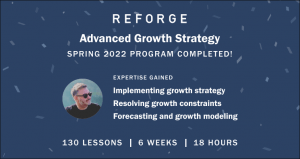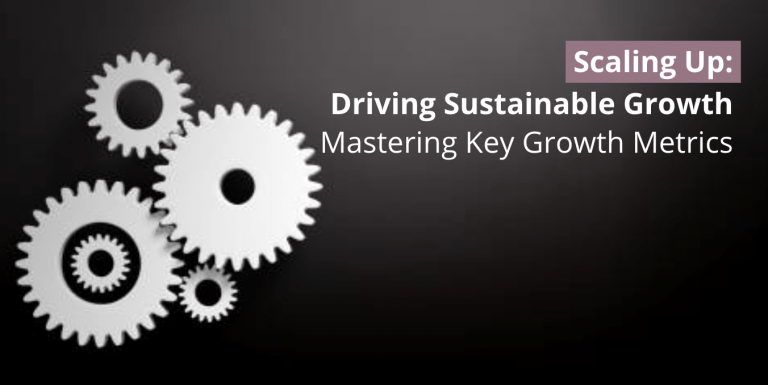Throughout my career navigating tech startups and scale-ups, I’ve discovered that adaptable leadership makes all the difference between thriving and struggling teams. This journey has taught me that versatile leadership styles don’t just determine organisational success—they fundamentally shape team wellbeing and individual growth. By learning from both inspiring mentors and witnessing harmful leadership failures around me, I’ve developed an approach that challenges traditional patterns and creates healthier, more productive environments.
I’ve seen colleagues still struggling with the aftermath of poor leadership years after leaving roles, and watched how others thrived under supportive leaders who brought out their best. These stark contrasts sparked my interest in what makes leadership truly effective.
The distinction between leadership and management remains one of the most misunderstood aspects of professional development. Whilst management focuses on operational processes and learnt techniques, true leadership creates inspiration, transformation, and growth. As young professionals navigate their career paths, understanding this difference becomes crucial for developing their unique leadership identity.
Leadership creates inspiration, transformation, and growth.
Management ensures operational processes.
Both matter, but they serve different purposes.

I’ve watched organisations promote people into leadership positions based on everything from favouritism to experience to singular achievements. While some criteria appear valid on the surface, these promotions often place individuals with incomplete notions of team management and virtually no leadership skills in charge of others. The consequences ripple through teams, affecting productivity, innovation, and wellbeing.
Daniel Goleman’s framework on emotional intelligence offers valuable insights into six leadership styles, providing a strategic lens for guiding teams through growth phases and market shifts. Since first encountering his framework, it has profoundly shaped how I lead teams and advise organisations.
The Leadership Style Spectrum
In fast-paced tech environments, successful leaders don’t rely on a single approach. They develop a flexible repertoire of styles to deploy based on the situation, team dynamics, and desired outcomes. This adaptability becomes particularly vital when scaling teams through different growth phases. Throughout my career, I’ve deliberately cultivated this flexibility, drawing inspiration from Goleman’s framework to expand my leadership toolkit beyond natural preferences – a journey driven by wanting to create healthier, more productive workplaces than some I’ve witnessed.
Visionary Leadership: Showing the Way Forward
When introducing new Growth strategies, marketing roadmaps or pivoting organisational strategy, visionary leaders mobilise people toward a shared goal with a compelling “Come with me” approach. This style works exceptionally well when:
- Tech organisations need a new direction or fresh perspective
- Cross-functional teams require clarity during periods of market change
- Long-term strategies demand clear communication to diverse stakeholders
Visionary leadership creates the strongest positive climate of all styles, inspiring commitment through purpose rather than compliance through authority. It draws on emotional intelligence competencies like self-confidence, empathy, and the ability to catalyse change—essential qualities when navigating uncertain market conditions.
Unlike management, which maintains systems, visionary leadership transforms them by creating a compelling picture of what could be. This distinction becomes particularly apparent during scale-up phases when teams need more than process management to thrive.
Democratic Leadership: The Power of Participation
Working with talented teams of specialists taught me that democratic leaders forge consensus through participation, frequently asking, “What do you think?” This approach:
- Builds organisational buy-in for technical initiatives and platform changes
- Harvests valuable insights from team members closer to the customer experience
- Creates ownership of decisions and outcomes, particularly important in agile environments
The democratic style builds on collaboration and communication competencies, creating a positive climate where diverse voices matter and contributions add value. Rather than simply directing work (management), democratic leadership engages people in shaping their work environment – something particularly valued in today’s world where talent often leave roles when they feel unheard or undervalued.
Affiliative Leadership: People Come First
Affiliative leaders can create harmony by building emotional bonds, emphasising “People come first.” This approach works especially well when:
- Healing team rifts or conflicts following reorganisations
- Motivating during high-pressure product launches or intense sprints
- Strengthening connections between remote and in-office team members
Drawing on empathy, relationship-building, and communication skills, an affiliative leadership creates a supportive environment where people feel valued as individuals, not just resources. This contrasts sharply with traditional management approaches that often prioritise processes over people—a fatal mistake in competitive talent markets where retention directly impacts business outcomes.
I've seen teams where poor mental health became normalised due to leadership that devalued the human element. Affiliative leadership directly counters this damaging approach.
Coaching Leadership: Developing Future Potential
In an industry where skills rapidly evolve, coaching leaders develop people for the future with a supportive “Try this / Aim for that” philosophy. This style excels at:
- Helping team members improve performance and adapt to new technologies
- Developing long-term strengths and capabilities beyond current role requirements
- Building organisational bench strength for sustainable scaling
With its focus on developing others, empathy, and self-awareness, coaching leadership creates a positive climate focused on growth. Whilst management ensures current sprint commitments get met, coaching leadership builds future capacity. I’ve consistently found this approach creates exponential returns as team members grow into more autonomous contributors.
Who hasn’t heard the quote by Richard Branson, “Train people well enough so they can leave, treat them well enough so they don’t want to“. Well, here you’ve got it.
Coaching represents perhaps the most profound contrast to poor leadership I’ve observed, where teams stagnate because leaders view development as a distraction rather than an investment. The long-term effects on both individual careers and company success cannot be overstated.
Who hasn't heard the quote by Richard Branson, "Train people well enough so they can leave, treat them well enough so they don't want to". Well, here you've got it.
Coaching represents perhaps the most profound contrast to poor leadership I've observed, where teams stagnate because leaders view development as a distraction rather than an investment.
Pacesetting Leadership: Leading by Example
During critical go-to-market phases, pacesetting leaders set high performance standards with a “Do as I do, now” approach. This style works effectively when:
- Quick results need to meet investor expectations or counter competitive threats
- Working with highly motivated and competent specialist teams
- Short-term goals require rapid achievement to unlock next-stage funding
Drawing on conscientiousness, drive to achieve, and initiative, pacesetting achieves immediate results but often creates a negative climate over time—something I’ve witnessed firsthand in high-pressure startups. It represents a challenging middle ground between leadership and management, potentially sacrificing long-term inspiration for immediate results.
This style demands careful application, as I’ve seen teams burn out under relentless pacesetting without adequate recovery periods, creating lasting damage to both individuals and organisations. Use sparingly and focused and revert at the first possibility.
Commanding Leadership: Decisive Direction
In rare but crucial moments, commanding leaders demand immediate compliance with a direct “Do what I tell you” approach. This style works best in:
- Crisis situations requiring immediate action, such as security breaches or platform failures
- Business turnaround scenarios when survival hangs in the balance
- Addressing persistent performance issues after other approaches have failed
While drawing on drive, initiative, and self-control, the commanding style typically creates a negative climate when used extensively—particularly with knowledge workers. It represents management at its most directive but can serve as a crucial leadership tool in specific situations.
The key lies in recognising precisely when this approach truly becomes necessary versus when it simply offers convenience. I’ve watched leaders default to commanding styles due to impatience or insecurity, creating lasting damage to team trust and psychological safety.
Finding Your Leadership Identity
Effective leadership isn’t about perfecting a single style but developing flexibility across multiple approaches. The most influential leaders I’ve encountered apply the appropriate style for the context—often shifting between styles seamlessly even within the same day.
From scaling early-stage products to managing mature teams, I constantly look to refine my approach but using these strategies here as framework:
- Assess your default style and identify which approaches feel most natural in your current context
- Practise techniques from styles that challenge your comfort zone, particularly during low-risk situations
- Seek feedback on how different approaches impact various team members across functions
- Observe leaders you admire and analyse their style flexibility throughout different business phases
- Develop the emotional intelligence competencies that underpin each style, recognising these as the true differentiators in leadership effectiveness
Stumbling over Goleman’s framework was a watershed moment for me. It’s a practical, easy to understand toolkit.
Moving Beyond Management
- Management and leadership differ fundamentally in intent and focus.
Management delivers operational excellence through processes and controls—necessary but not enough on its own. - Leadership ignites excellence through attitude, vision, and connection—turning potential into real performance.
True leadership transcends position. I discovered this early on, watching people being promoted or listened to on merit of tenure, connections or sympathy even if they weren’t equipped to lead over those voices further down in the corporate hierarchy who pushed and innovated.
Some were utterly awful. Absolutely useless. No hard feelings but I’m being blunt to illustrate my point.
Of course, some of them are not necessarily without expertise in their chosen area but we’re particularly focusing on leadership and management capabilities and not their experience in Marketing, Product, Engineering and so forth.
Equally, some will be perfectly nice, friendly peopled individuals that get on with the team. This still doesn’t automatically qualify anyone to be good at leadership or team management.
Remember the often quoted line: The goal is to be respected, not to be liked.
If respect is earned you will likely be liked – congratulations! But never the other way round.
Also for any career leaders: Respect is not about being cold, distanced, authoritarian, mean, having the last word, being awkward or giving ‘big daddy’ vibes.
These may be your personal defence arsenal but if that’s the case, my advise would be to just stop it – you’re acting a perceived role. Beyond that facade, you’re ridiculous. Maybe also consider reading this article again from the top.
Wrong leaders in crucial positions and in charge of people happen all the time in orgs of all sizes and across the globe. The scaleup or startup culture in its true sense won’t be able to carry that weight for very long and a more equal baseline can be established.
Larger organisations with complex organisational matrices often struggle with hierarchical bottlenecks where decisions flow only from the top down. Let’s be honest – this environment fosters a culture where many employees simply clock their time with the primary aim of securing their pay cheque, prioritising excessive deference to authority over innovation. Neither the company’s long-term success nor its employees’ professional development is served by such a system.
This leadership skills gap creates ripple effects lasting years. But it’s actually quite simple: ANY professional can lead from any position by …
- Connecting daily work to larger vision and purpose.
- Building genuine relationships across departments and levels
- Valuing diverse perspectives, especially from unexpected sources
- Developing others through knowledge-sharing and mentorship
- Setting high standards without micromanaging execution
- Making decisive calls rather than defaulting to committees
The shift from management to leadership takes practice, self-awareness, and comfort with discomfort.
By applying Goleman’s leadership styles in real situations, you can start developing your authentic voice and help others achieve beyond their own expectations.
Another aspect is that of your team and your colleagues’ mental health. Too often, organisations promote based on criteria that ignores crucial leadership abilities, forcing teams to endure managers who never learned – or care – to lead. I’ve first-hand seen several David Brents and at times the real David Brent would’ve been the preferred option.
Results matter, but at the cost of wellbeing? Certainly not.
Having witnessed colleagues suffer from atrocious leadership (yes, I have a long list of names but no, I’m not into name & shaming) that shattered their confidence and career trajectories has given me additional boost and determination to create better environments.
From securing funding to scaling operations, different moments demand different approaches. The visionary charts new directions, the democrat builds buy-in, the affiliative heals team divides, the coach develops future capabilities, the pacesetter accelerates through critical windows, and the commander steers through crises.
By integrating these leadership styles tactically, you can navigate complex team dynamics and drive sustainable growth, all while staying true to your professional identity.
The ripple effects of leadership choices extend well beyond business metrics. They determine whether people bring their whole selves to work, develop their potential, and leave with their spirit intact.
Anyone’s leadership journey should kick-off with understanding these styles and recognising their differences and how it is separate, but oftentimes augmented, to managing people.
When we lead with awareness and intention, we create environments where people do their best work without sacrificing their health, relationships, or sense of purpose.
That matters not just for business outcomes but for the lives we touch through our leadership choices every day.















